Dordogne Travels: The Lure of Périgord
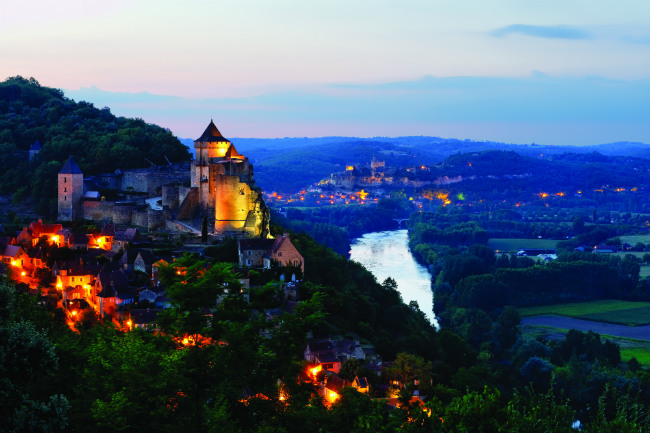

La Dordogne: an ancient realm where dark rivers sweep under limestone cliffs and medieval hilltop villages emerge from lush dense forest; where a cornucopia of local produce has created a rich and abundant gastronomic heritage; where the extraordinary legacy of prehistoric cave art contrasts with the sublime architecture of grand Renaissance châteaux; where today’s traveller can stay for a week, a month, a season and never grow jaded. Guy Hibbert explores…
The Périgord, to use the old name for the modern French department number 24, the Dordogne, is a multi-faceted jewel of a region in South-West France, where the sun is high enough to make for warm humid summers, sunny dry autumns, short sharp winters and lush verdant springtimes.
Many people claim to know the Dordogne but when you challenge them on their knowledge, it turns out they know their favourite patch well, but have only been to one or two towns and villages beyond – in other words, they have formed their opinion too early. To discover all that this grand region has to offer requires time and imagination, to venture away from the tourist hot-spots, to meander a little off the beaten track, to allow time to linger and create your own memorable experiences.
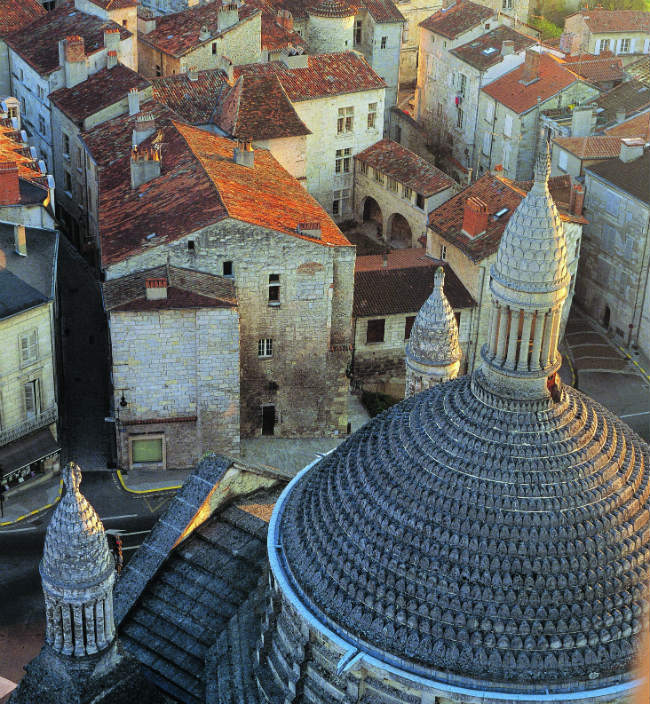
Rooftops of Périgueux. Photo: OT de Périgueux
‘Dordogneshire’
The British have a long association with the Dordogne, and fought over it often during the Hundred Years’ War in the 14th and 15th centuries. By contrast, today’s Brits are more likely to be seen fighting over an old property for sale, enjoying the sensual delights of a summer market or canoeing down a river. So popular has the region proved with expats that national newspaper journalists in the UK enjoy referring to ‘Dordogneshire’ and if your only experience is passing through Bergerac airport or visiting the pretty town of Eymet then you might think that this reputation has been well earned.
It’s no surprise the British love the area – it reminds them of the more picturesque parts of England, say the Cotswolds, but with less crowds and better weather. But it would be a great mistake to label the Dordogne in this clichéd manner. Nostalgia for pastoral idylls is a powerful draw for many travellers, not just the British, and this is a corner of France that can deliver a heady antidote to the stress of busy lives, giving a taste of what has often been lost in more densely populated parts of the world. Like an actor who happens to be excellent at a certain role, there is always a danger of typecasting – but the reality is that la Dordogne is a star with a diverse portfolio ready to be revealed, if you know how and where to look.
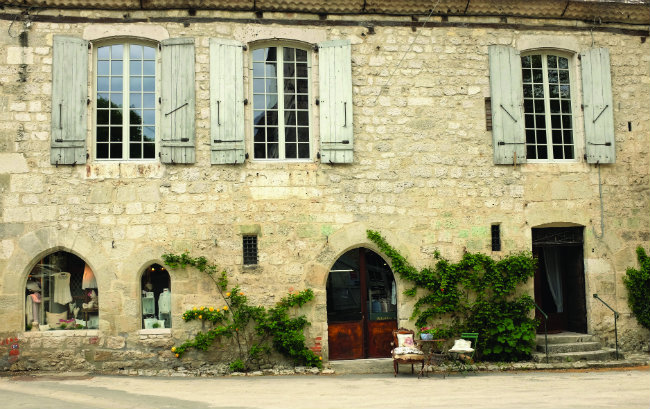
Issigeac. Photo: Guy Hibbert
Take a moment to consider the Dordogne ‘by numbers’ and you will begin to appreciate its scale and diversity. It’s actually the third largest département in France and can easily take two and a half hours to cross by road from one border to another. And no wonder its river-based activities are legendary because it has over 500 kilometres of navigable waterways, including the mighty Dordogne, the Vézère, Isle and Dronne. All this space is beautifully green: of the 557 communes, 497 are rural. The tourism office is rightly proud of the fact that they have 190 different sites and monuments open to visitors, including 70 or so museums, no fewer than 10 of France’s listed villages, 15 UNESCO World Heritage prehistoric sites, over 250 hotels, a similar number of campsites and literally thousands of gîtes and country properties for rental. No wonder three million tourists come to the Dordogne every year.
And yet there is space for them all. Because, aside from its supremacy in numbers, the Dordogne is big enough to offer a charming diversity of landscapes, attractions and activities to cater for most tastes and to allow people to join in the action or be an escapist, as the mood dictates.
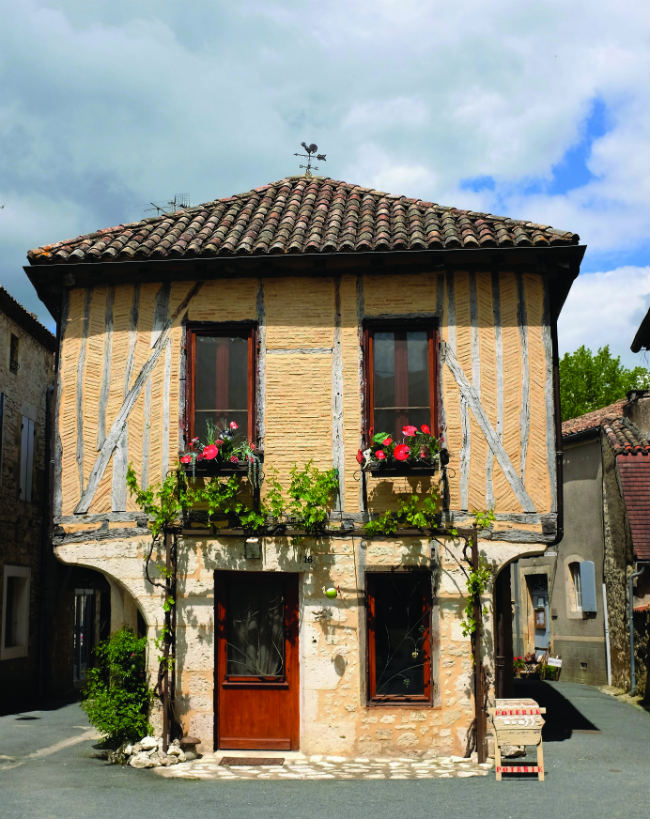
Issigeac. Photo: Guy Hibbert
The Four Colours of Périgord
Some years ago the tourist authorities hit upon a distinct way of naming some of the territories within the département – the so called four Périgords, the Noir, Pourpre, Blanc and Vert (black, purple, white and green). Unlike some more fanciful labels these labels are actually quite handy to get your bearings and they allow the visitor to get a sense of what lies beyond the hotspot destinations. Having lived and travelled in the Dordogne I can vouch for the aptness of the names.
Périgord Noir lies in the southeast and contains that most quintessential of Dordogne towns, Sarlat, where golden and ochre medieval buildings cast deep cooling shadows over immensely picturesque cobbled streets lined with souvenir shops and restaurants serving an endless array of local gastronomic specialities – avoiding duck on the menu is simply not an option. Visit Sarlat in the evening to appreciate the romantic lighting and special ambience. Périgord Noir is also home to the Vézère valley with its magnificent networks of underground caves and grottoes, and the Dordogne valley with its magnificent châteaux on their pinnacles overlooking the broad, shining river below. This is the heart of the Dordogne that many tourists know and love and return to summer after summer.

Montpazier medieval festival. Photo: Jonathan Barbot
Bastide Towns
To the west lies Périgord Pourpre, so named from the colour of the grape, as this is home to the lovely city of Bergerac (of Cyrano fame), surrounded by vineyards producing the much-appreciated Bergerac Blancs and Rouges, with the sweet wines of Monbazillac grown to the south of the city and less well-known reds such as AOC Pécharmant to the east. Périgord Pourpre also encompasses the numerous fascinating 13th-century bastide towns such as Monpazier and Beaumont-du-Périgord with their unique grid layout and fortifications which tell terrible tales of the battles of the Hundred Years’ War.
The central Dordogne, to the north of Bergerac, is named the Périgord Blanc, because of the calcaire, the bright limestone that underlies the gentle rolling hills and valleys of open farmland and supplies the characteristic white stone for many buildings, including many striking Romanesque churches. The capital of the Dordogne, Périgueux, with its spectacular Romanesque cathedral and quaint vieille ville (great for shopping), is situated in this department, as is the country town of Ribérac, where a very popular market takes place every Friday.
To the northeast of the department lies the Périgord Vert, bordering on the Limousin, where green chestnut and oak forests are interspersed with cattle-grazing pastures. Visitors here head for the picturesque town of Brantôme, with its medieval abbey in white limestone, and the lovely village of Bourdeilles, with its château to visit and where a picnic by the gentle Dronne river is one of my favourite days out.
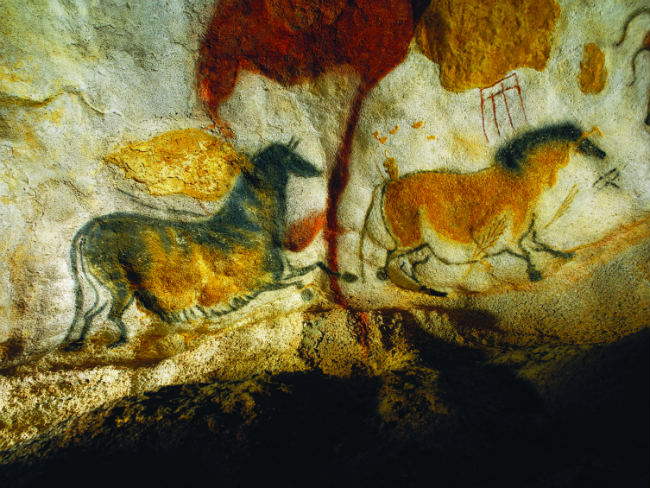
The ancient cave paintings of Lascaux. Photo: Sémitour
Prehistoric Marvels
Now you’ve got your bearings, the question is, in which direction to head first? Of course this all depends on your priorities. But for starters almost everyone can find inspiration in the ‘Vallée de la Préhistoire’, an unrivalled location for caves, caverns and underground treasures. With 147 sites, 15 of which are UNESCO World Heritage listed, there’s scope for everyone, but atop the many archaeological wonders sits the ‘Sistine Chapel of Prehistory’, the wonderful Lascaux cave network with its extraordinary cave paintings, first discovered by four teenagers back in 1940. The year 2016 brings exciting developments for Lascaux, with the opening of The Centre International d’Art Pariétal Montignac-Lascaux (or Lascaux 4), a grand scheme blending contemporary architecture and design which will offer a full reproduction of the Lascaux cave thanks to new virtual reality and image technology.
Beyond Lascaux there are plenty of other underground attractions including the original cave paintings at Font-de-Gaumes, Les Eyzies, the unusually beautiful geological formations at the Gouffre de Proumeyssac and Maxange caves or the chance to go pot-holing at the Grotte de Beaussac.
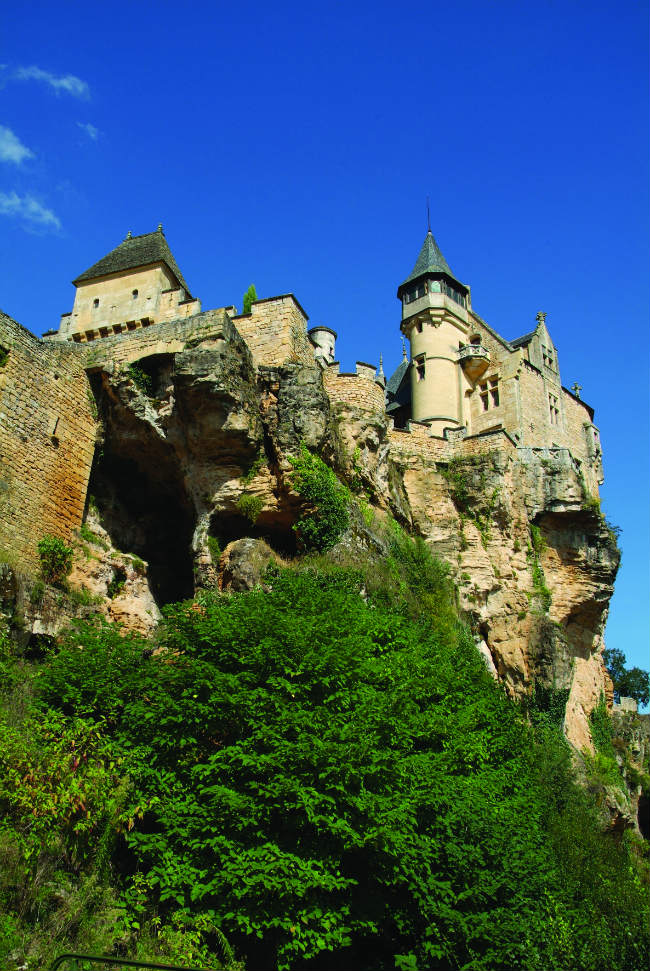
Montfort. © Mathieu Anglada
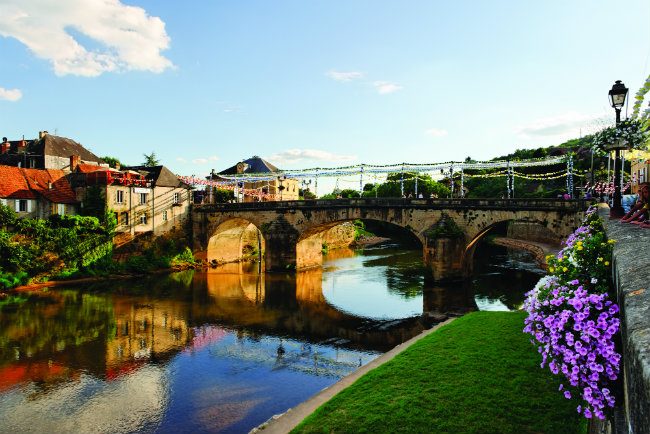
Montignac. Photo: Jonathan Barbot
Châteaux and Villages
Above ground, more traditional but equally uplifting architecture awaits, because the Dordogne has more than its fair share of châteaux to visit. From early fortified castles such as the cave fortress at Reignac and the imperious heights of Beynac and Castelnaud to the Renaissance masterpieces of Jumilhac and Milandes, which was built by the Lord of Caumont for his wife in 1489 but became much more famous in the last century as the home of chanteuse Josephine Baker and her children.
On a much more modest scale, but no less appealing, are the typical golden-stoned blue-shuttered villages of the Dordogne. The greatest claims to fame lies in the fact that no less than ten of the plus beaux villages de France are scattered throughout the department. In fact, the Dordogne is home to the largest number of listed villages in France. Situated 20km from Sarlat, Saint-Amand-de-Coly nestles between two wooded valleys and is famous for its 12th-century abbey. In the Périgord Vert, Saint-Jean-de-Côle’s history is linked with that of the Château de la Marthonie, which dominates its main square, while the typical village of Saint-Léon-sur-Vézère between Montignac and Les Eyzies boasts no fewer than three castles. Other villages include Limeuil (overlooking the confluence of the Dordogne and Vézère), Monpazier, La Roque-Gageac, Belvès, Domme, Castelnaud-la-Chapelle and Beynac-et-Cazenac.
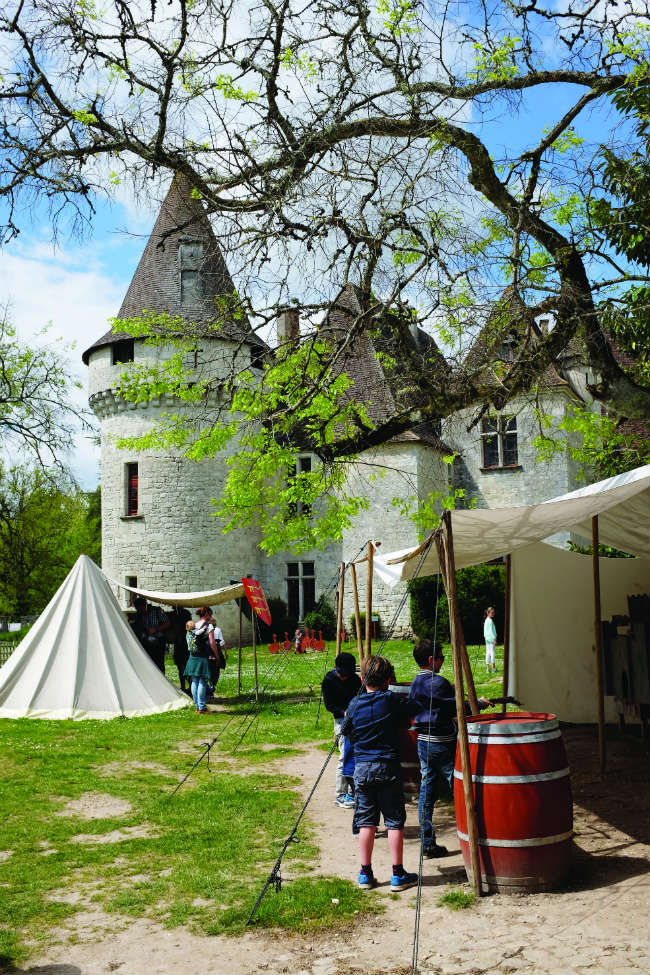
le Château de Bridoire. Photo: Guy Hibbert
Summertime Fun – for Children of all Ages
The summer season delivers maximum value for family holidaymakers with over a hundred events and activities focused on the younger tourists. Under the seductive heat of the Périgord sun there are plenty of activities to entertain the kids. After they have exhausted the pleasures of family canoeing why not give them a little education about ancient history at the Prehistory Labyrinth, opening in 2016, where they become explorers for a day. Or visit the Isle river near Jumilhac for a spot of gold-panning. For a theme park with a gentle French country vibe try Le Bournat. And don’t forget that many châteaux stage activities and displays with falconry, jousting and medieval street fairs to enjoy.
Anyone looking for more active pastimes is well catered for – the département offers numerous canoeing, kayaking, cycling and hiking trails for all standards, some, such as the Cro-Magnon Footpath, follow in the footsteps of prehistoric man. Organise your own ad hoc expedition or join in one of the many organised events. There truly is something for everybody – vintage costume and bicycle fans, for example, should not miss the retro cycle rally leaving from Monbazillac in August.
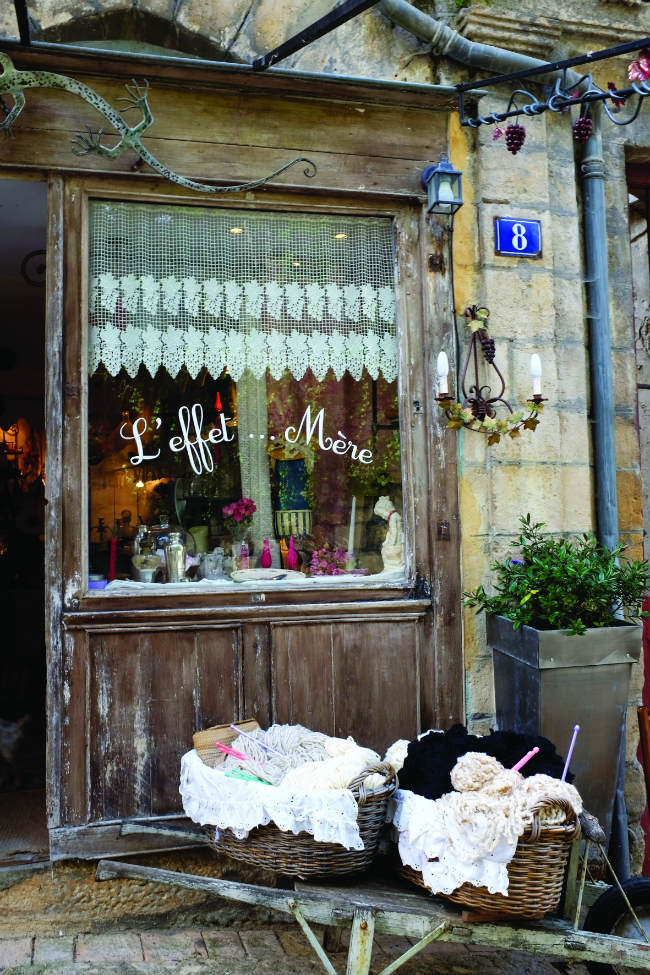
A shop in the Dordogne. Photo: Guy Hibbert
More Unexpected Pleasures to be Discovered
But often the charm of the Dordogne lies in the unexpected. You are driving or cycling and en route you take a wrong turn and find yourself in a little village which wasn’t recommended and hasn’t won any accolades. But as you look around your mystery village there’s an irresistible ambience – you have stumbled into a haven where time appears to have stood still for centuries. So you stop for a leisurely déjeuner in a sleepy café and admire the sun filtering through the canopy of an ancient plane tree in the square. You exchange some friendly words with the waiter and watch a couple of old gents sitting and chatting on a bench near the fountain. On a crumbling ochre wall you notice the faded blue and white painted lettering advertising a long forgotten liqueur while at the foot of the wall a cat stretches lazily in the spring sunshine. In other words, you slow down, and you let the Dordogne, this rich and magically diverse region, fold its warming arms around you.
From France Today magazine
Related articles: Where to Stay and Eat in the Dordogne
12 of the Finest Dordogne Châteaux
Things to See and Do in the Dordogne
***************************************************
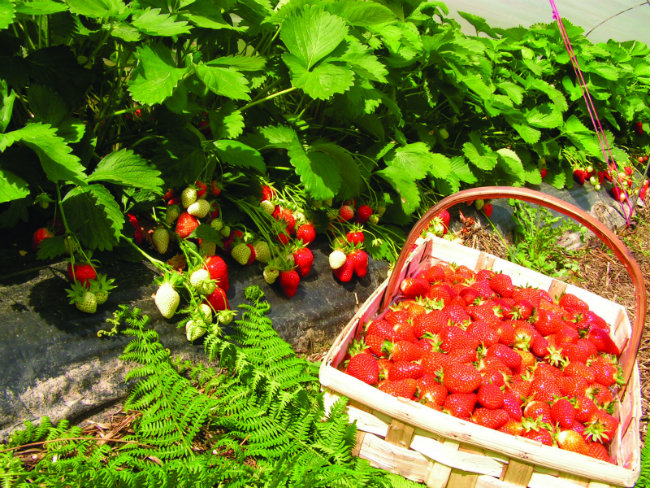
Dordogne strawberries. Photo: B. Plantevin/ Chambre Agriculture Dordogne
A Foodie Heaven
Blessed with fertile soils, enough rain to irrigate and plenty of warm sun to ripen its produce, the Dordogne offers an extravagant palate of local produce to tempt you.
Dordogne strawberries are hard to beat (buy them from any market and be sure to eat them the same day!) Sweet and fragrant, with many varieties to choose from – they even have their own website.
Walnuts are a Dordogne speciality, with Appellation d’Origine Contrôlée status. You’ll enjoy them on a classic Périgordine salad – or even better, take back some walnut oil to dress your salads at home.
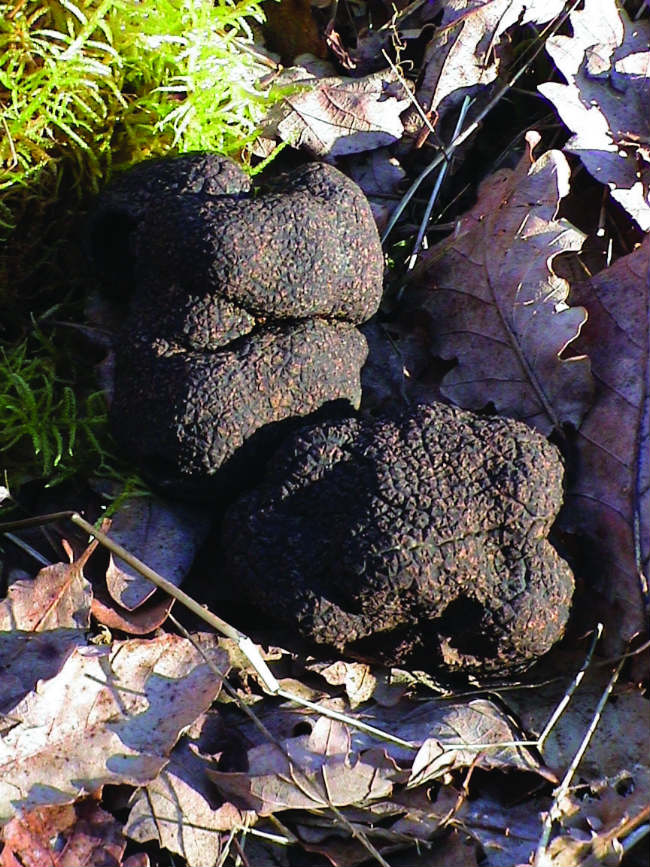
Perigord Truffles. Photo: CP Ecomusée de la truffe
Black truffles are a local speciality highly prized by chefs for their delicate, aromatic, yet ear thy flavour. The truffles are harvested from December to February and sold in markets at very high prices.
Foie gras can divide opinion but there’s no getting away from its status in the Dordogne, where the duck and goose varieties are served in nearly all restaurants as an appetiser or cooked as part of a gastronomic main course.
Duck features in many shapes and forms within Périgordine cuisine, served as rillettes (a kind of pâté) on toast as a starter or cooked as magrets (grilled breast with a sauce) or confits (preserved in fat, served crispy).
Want to visit The Dordogne? Join France Today on one of our luxury tours of Darling Dordogne

Perigord walnuts. Photo: Syndicat Professionnel Noix du Perigord
Share to: Facebook Twitter LinkedIn Email
By Guy Hibbert
Leave a reply
Your email address will not be published. Required fields are marked *

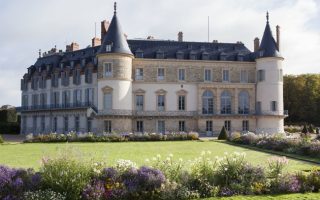


REPLY